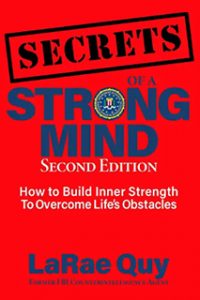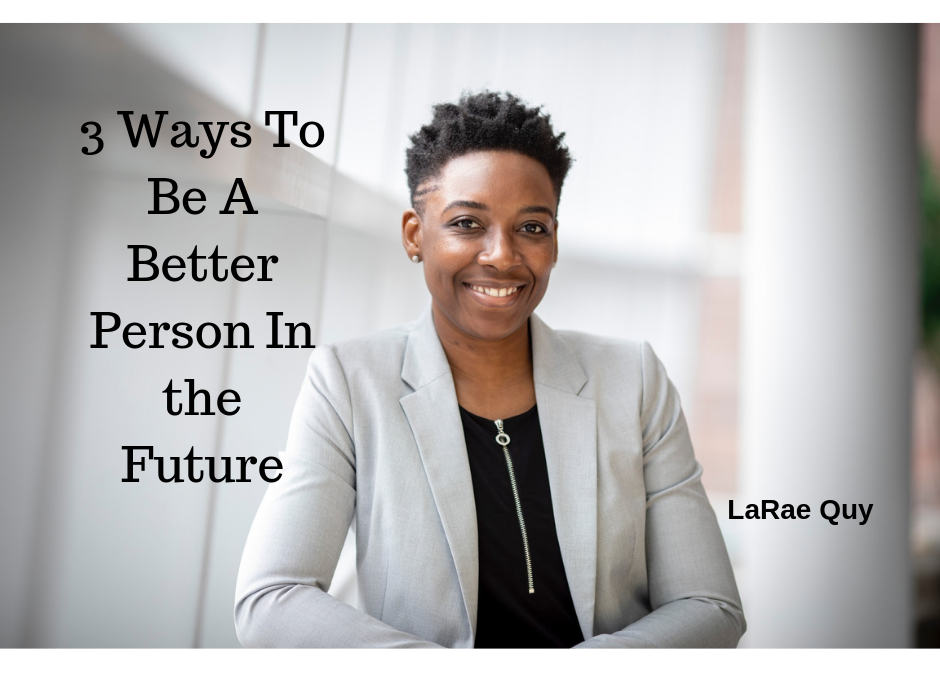Most of us tend to spend a great deal of time and energy on ways to develop and track a career. We know that a plan and long term goals are essential for any business or startup.
In the process, it’s easy to forget about something just as important—ways we can develop and track a personal development plan for ourselves as well. We need to plan for ways to be a better person in the future. It’s imperative that we don’t succumb to self-limiting beliefs about who we think we can become and what we think we can achieve in life.
I was a fashion buyer before I became an FBI agent. On the first day at the FBI Academy, everyone stood up and gave their background—military officers who had led dangerous military missions in North Africa, police officers who survived shootouts, and successful prosecutors against dangerous mob families in New York.
So, when I stood up and told everyone I was a fashion buyer for a fancy retail store, everyone turned their head to look at the fluff ball who had accidentally gotten into the FBI.
Born and raised on a remote cattle ranch in Wyoming, I lacked the polish and sophistication of many of my fellow agents. Like many of you, I suddenly found myself in a challenging environment and didn’t know if I had what it took to succeed. I needed to be mentally tough if I planned to achieve my goals and dreams to become an FBI agent.
Mental toughness is the ability to manage our emotions, thoughts, and behavior in ways that will set us up for success.
Are you mentally tough? Take this FREE assessment.
It’s important to upgrade the way we think about ourselves if we hope to be a better person in the future. Here are 3 ways:
1. Look At Your Present Self and Future Self As Two Different People
Research by Daniel Gilbert indicates that people are bad at predicting who they will become in the future. According to Gilbert, human beings are works in progress that mistakenly think they’re finished. He shares recent research on a phenomenon he calls the “end of history illusion,” where we somehow imagine that the person we are right now is the person we’ll be for the rest of time.
Thank God that is not the case!
A person who views the world at 40 the same way they did at 20 has just wasted 20 years of their life.
Studies support the idea that our current self and future self are two different people. We see tremendous changes from the age of 15-35. However, the rapidity of personality change tends to slow down from the ages of 35-45.
That means we need to consciously and intentionally make efforts to learn and grow as we age. It will necessitate a disruption in our routine because while routine is touted as a great way to be efficient, our brain requires novelty, creativity, and challenge in order to grow. We need to hold the tension between a proven routine that works and is predictable, with one that challenges us to move beyond what the brain has ever done before.
How To Make It Work For You: Create a 5, 10, and 15-year plan for your own personal development. What do you want to look like in the future? What do you want your life to look like? What do you want your environment to look like? Who will be the primary people in your life? What will your typical day look like?
If you’re not excited about your future, don’t expect your brain to be either. The answer to these questions will be a catalyst for your brain. They will jumpstart it to think about a new journey, process new information, and find ways for you to fit into your world in a new way.
2. Say Yes To The New

Until recently, the brain was regarded as an immutable organ that did not change after early childhood. In 2000, Eric Kandel was given the Nobel prize for medicine demonstrating that, as learning in the brain occurs, the connections among nerve cells increase. Hundreds of studies went on to demonstrate that the brain has the ability to reorganize itself by forming new neural connections. This is called neuroplasticity, and it continues throughout life.
Researchers like Mike Merzenich and Norman Doidge have concluded that while our genes help determine how we can respond to our environment, they do not make us who we are. We all have untapped potential.
How To Make It Work For You: Do not believe everything you think. Since the limbic brain is hardwired to pay more attention to negative thoughts than positive ones, make sure you stop and listen to what your mind is telling you. You will be shocked to realize how much of it is negative. Often it will be enough to make you give up.
Your beliefs become your thoughts,
Thoughts become your words,
Words become your actions,
Actions become your habits,
Habits become your values,
Values become your destiny
― Mahatma Gandhi
In order to stimulate neuroplasticity, try something new. Go somewhere you haven’t been before. Take up a new hobby. Read a book or try eating something or doing something that isn’t a regular activity for you.
3. Identify Goals That Reflect Both Personal And Professional Values
Until you gain clarity on your values, you’ll be tempted by any bright shiny object that sashays in front of you. Advertising preys on people who aren’t clear on their values and rely on slick ads to establish the important things in life for them.
You cannot talk about how to be a better person unless you know how to define what a better person is. Only then can you decide which direction you want to grow. To be a better person isn’t about feeling good all the time or making the most money.
If your biggest value is to be constantly entertained, just snort coke all day long and call it good.
This is where the rubber meets the road. Our values are reflected in the way we chose to live our lives and treat other people. Words are easy because we can say whatever we want without meaning them. Words are cheap because we don’t have to back them up.
I learned early as an FBI agent that people can say lots of things, but they’re empty words until those words put into action by their behavior. Conversations can be full of lies, but actions always speak louder than words.
How To Make It Work For You: Values are very personal. Draw up a list of bad values and good ones. If you’re confused, follow these guidelines:
Bad values are those we cannot control, the ones that place us in situations where we look outside ourselves for the solution. For example: money, being the center of attention, good looks, always looking for pleasure and excitement, or not able to be alone.
Good values are the ones that you can control. For example: honesty, courage, charity, humility, and self-respect.
© 2019 LaRae Quy. All rights reserved.
You can follow me on Twitter, Facebook, Instagram, AND LinkedIn
Are you mentally tough? Here is my FREE Mental Toughness Assessment
Check out my new online training program at www.SecretsOfAStrongMind.com
Get my new book, “Secrets of a Strong Mind (second edition): How To Build Inner Strength To Overcome Life’s Obstacles”

Author of “Mental Toughness for Women Leaders: 52 Tips To Recognize and Utilize Your Greatest Strengths”



You know, when I worked in a corporate setting, I’d often work with my employees on their PDP – Personal development Plan. It was also their Professional Development Plan. We’d review it ongoing, add, delete and course correct. Funny that outside of that setting, most people don’t think twice about crafting a plan. It makes total sense.
Will share!
Alli
I love this post LaRae as it really got me to think about what matters moving forward in my career and life. Yes values are critical but I am so intrigued by “bad” vs “good”values”. I never thought about how the values we can’t control are the “bad” ones while the ones we can control are the “good” ones. It makes perfect sense.
Thanks for inspiring us to think once again!
Excellent information LaRae. You are spot on!
I love this. Will start using today as I plan for retirement in a few years.
Great, Monica! So glad that it inspired you…